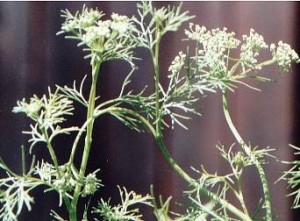Cultivation Methods of Ajwain
 Common name: Ajwain (Trachyspermum Ammi)
Common name: Ajwain (Trachyspermum Ammi)
Sanskrit Name: Yavanika
German Name: Tolib-ul-Khubza
Gulf Name: Zinianas Nankhuah
Malayalam Name: Homam
The seeds of this crop are used as spices. Ajwain has many medicinal properties. It is widely used in traditional house hold remedies.
This plant grows well in India and is largely cultivated in eastern India. The crop can be grown on wide variety of soil from heavy clay to elite loams. Ajwain is very sensitive to water logging and need good drainage. Ajwain is tolerant to drought. The best time for sowing of this crop is early august month.
Propagation Methods
The seeds are sown directly in the field. The seeds take 8 to 10 days to geminate. Thinning should be carried out when the plant gets a height of 20 to 25 cm. 1.5kg of seeds per hectare is required for sowing.
Manure
Farm Yard manure – 25 tones
Double Superphosphate – 30kg
Muriate of Potash – 30kg
These are incorporated into the soil. Urea is applied in three equal split doses. First at the time of sowing, then subsequently two doses being at an interval of 30 days.
The plant requires about 120 to 140 days for maturity. When seeds turn full brownish the whole plant can be uprooted. The whole plants are then tied in small bundles and tacked for drying and then threshed.
Home Remedies with the help of Ajwain
1. A plaster made of Ajwain seeds crushed and used to relieve pain of Colic.
2. A teaspoon full of the Ajwain seeds with a little rock salt is a common domestic remedy for indigestion from irregular diet.
3. Ajwain seeds are famous for asthma sufferers, small seeds are smoked in a pipe to relieve shortness of breath.